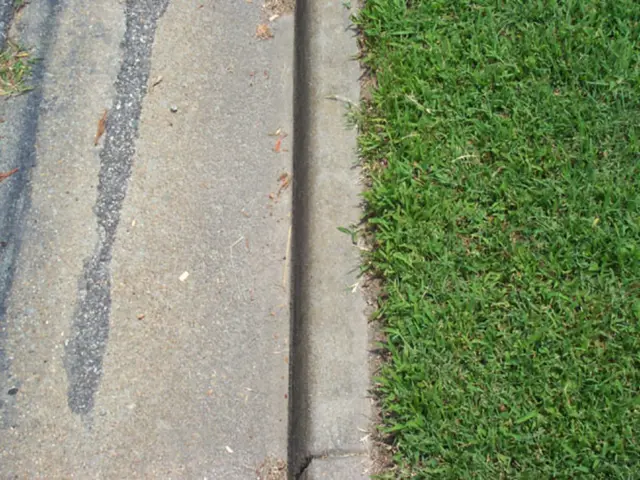Spotting age versus cancer: Recognizing disparities to distinguish
Elderly Skin Blemishes vs Cancerous Growths: A Guide to the Differences
Skin changes can be a cause for concern, especially as we age. Understanding the distinctions between harmless blemishes, like age spots, and potentially harmful growths, like skin cancer, is crucial. This article explores the characteristics of age spots and skin cancer while discussing their symptoms, diagnosis, and treatments.
Age Spots vs Skin Cancer: What's the Difference?
Although age spots and skin cancer may share similar appearances, they have essential differences. Unlike cancer, age spots are harmless and don't necessitate treatment or removal.
Age Spots
Known as solar lentigines or liver spots, age spots are dark, flat patches on the skin, typically yellow, brown, or gray in color. They have well-defined borders and are usually between a few millimeters and centimeters in size. These spots normally appear on sun-exposed areas such as the face, hands, shoulders, feet, arms, and back [1].
These harmless spots form due to the body's overproduction of melanin, a pigment that protects the skin from UV radiation. Age spots are more common on light skin and usually appear from middle age onwards [2].
Skin Cancer
Skin cancer refers to the abnormal growth of skin cells due to UV radiation damage, other environmental factors, or genetic predispositions. Like age spots, skin cancer development happens most frequently on sun-exposed areas.
There are various types of skin cancer, including:
- Basal Cell Carcinoma: A common type of cancer that appears as a small, red or pink bump with possible areas of blue, black, or brown. Basal cell carcinomas may have raised edges and a lower center, and itching is common [3].
- Squamous Cell Carcinoma: This type of skin cancer usually presents as a red or darkened patch of scaly skin, resembling a wart. It may bleed or ooze and then crust over [3].
- Melanoma: An aggressive and potentially deadly form of skin cancer. It's characterized by the ABCDE rule: asymmetrical shape, irregular borders, varying shades, larger size (more extended than 6 mm), and changes in size, shape, color, or elevation over time [3][4].
Another type of mark that might be mistaken for an age spot is actinic keratosis, a precancerous growth that occurs due to UV radiation damage.
Can Age Spots Turn into Cancer?
No, age spots cannot develop into cancer. However, actinic keratosis, which can appear similar to age spots, is a precancerous condition that may transform into cancer if left untreated.
Comparing Symptoms
Identifying skin changes is essential in discerning age spots from skin cancer.
Age Spot Symptoms
Age spots, when present, manifest as flat, smooth, round or oval, and light brown to black spots. They appear on sun-exposed areas and may fade in winter but become more pronounced in summer.
Skin Cancer Symptoms
Skin cancer symptoms can vary, but symptoms of potential skin growths include:
- irregular shape and blurred, ragged edges
- changes in color, size, or shape
- multiple colors on the same spot
- pink, blue, purple, black, or brown coloring
- raised, red patches
- pale or yellow firm patches, similar to scars
- itching, oozing, or bleeding
- crusty or scaly patches
- raised edges that lower in the middle
When to Contact a Doctor
If you notice any unusual changes on your skin, it's essential to consult a healthcare professional. Identifying skin cancer early can improve treatment outcomes. Consult a doctor if a mark on your skin:
- changes in color, shape, size, or location
- looks different from other moles or spots on your skin
- itches, crusts, scabs over, or bleeds and doesn't heal within four weeks.
Diagnosis and Treatment
A doctor or dermatologist analyzes age spots by conducting a physical examination to assess their appearance, texture, and placement. If unsure about a diagnosis, a skin biopsy may be performed to test for skin cancer or actinic keratosis.
Treatment for age spots depends on their severity and appearance. Although age spots are benign, some individuals may opt for cosmetic treatments to diminish their visibility. Treatment options for age spots include creams, lotions, laser therapy, cryosurgery, microdermabrasion, and chemical peeling [1].
Skin cancer treatments vary depending on the type and stage of cancer, as well as an individual's specific circumstances. In some cases, basal cell and squamous cell cancers can be surgically removed. Treatment options for skin cancer may involve topical therapies, radiation therapy, chemotherapy, immunotherapy, or systemic medication [3][4].
Conclusion
Age spots, skin cancer, and actinic keratosis can share similar appearances, but understanding the differences between them is crucial. Paying close attention to the size, shape, texture, and color of spots on your skin can help you identify whether the growths require medical attention. Early diagnosis and treatment of skin cancer can significantly improve health outcomes. Consult a doctor if you notice any unusual changes in your skin.
Here are some additional sentences that contain the given words:
- Age spots and other skin conditions, like dermatology-related concerns, can be managed with proper skin care and health-and-wellness routines.
- Seniors must be mindful of their skin health, as certain medical-conditions, such as skin cancer, can pose severe risks to their well-being.
- Skin-care regimens should prioritize the prevention of sun damage to minimize the risk of skin cancer and the appearance of age spots.
- Tanning beds and excessive UV exposure can lead to skin cancer, making it essential to practice sun safety and consult a dermatologist for appropriate skin-care advice.
- Science has made significant strides in understanding skin cancer and its origins, leading to improvements in diagnosis and treatment.
- Cancer is a serious medical-condition that demands prompt attention from healthcare providers to ensure proper treatment and recovery.
- Age spots can make an individual appear older than their actual age, affecting their confidence and self-esteem in health-and-wellness matters.
- Regular check-ups with a healthcare professional can aid in the early detection of skin cancer and other medical-conditions, ensuring timely intervention and improved outcomes.








